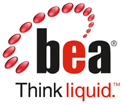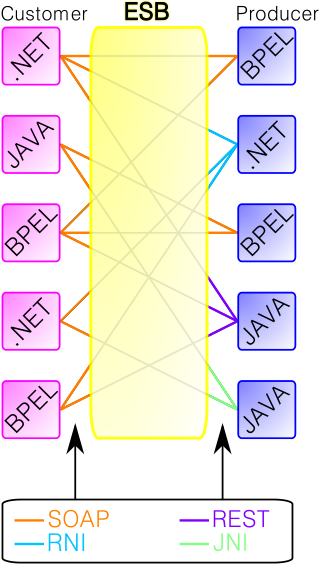Related Research Articles

Oracle Corporation is an American multinational computer technology corporation headquartered in Austin, Texas, United States. In 2020, Oracle was the third-largest software company in the world by revenue and market capitalization. The company sells database software and technology, cloud engineered systems, and enterprise software products, such as enterprise resource planning (ERP) software, human capital management (HCM) software, customer relationship management (CRM) software, enterprise performance management (EPM) software, and supply chain management (SCM) software.

StarOffice is a discontinued proprietary office suite, its source code continues today in derivative open-source office suites Collabora Online and LibreOffice. StarOffice supported the OpenOffice.org XML file format, as well as the OpenDocument standard, and could generate PDF and Flash formats. It included templates, a macro recorder, and a software development kit (SDK).
PeopleSoft, Inc. is a company that provides human resource management systems (HRMS), financial management solutions (FMS), supply chain management (SCM), customer relationship management (CRM), and enterprise performance management (EPM) software, as well as software for manufacturing, and student administration to large corporations, governments, and organizations. It existed as an independent corporation until its acquisition by Oracle Corporation in 2005. The PeopleSoft name and product line are now marketed by Oracle.
Oracle Database is a proprietary multi-model database management system produced and marketed by Oracle Corporation.

BEA Systems, Inc. was a company that specialized in enterprise infrastructure software products, which was wholly acquired by Oracle Corporation on April 29, 2008.

An enterprise service bus (ESB) implements a communication system between mutually interacting software applications in a service-oriented architecture (SOA). It represents a software architecture for distributed computing, and is a special variant of the more general client-server model, wherein any application may behave as server or client. ESB promotes agility and flexibility with regard to high-level protocol communication between applications. Its primary use is in enterprise application integration (EAI) of heterogeneous and complex service landscapes.
Oracle APEX is an enterprise low-code development platform from Oracle Corporation. APEX is used for developing and deploying cloud, mobile and desktop applications. The platform offers a web-based integrated development environment (IDE) with a range of features including wizards, drag-and-drop layout, and property editors to simplify the process of building applications and pages.

JDeveloper is a freeware IDE supplied by Oracle Corporation. It offers features for development in Java, XML, SQL and PL/SQL, HTML, JavaScript, BPEL and PHP. JDeveloper covers the full development lifecycle from design through coding, debugging, optimization and profiling to deploying.
Tuxedo is a middleware platform used to manage distributed transaction processing in distributed computing environments. Tuxedo is a transaction processing system or transaction-oriented middleware, or enterprise application server for a variety of systems and programming languages. Developed by AT&T in the 1980s, it became a software product of Oracle Corporation in 2008 when they acquired BEA Systems. Tuxedo is now part of the Oracle Fusion Middleware.
Oracle Developer Suite is a suite of development tools released by the Oracle Corporation. The principal components were initially Oracle Forms and Oracle Reports and the suite was later expanded to include Oracle Designer and JDeveloper amongst others.
The Oracle Application Server 10g, consists of an integrated, standards-based software platform. It forms part of Oracle Corporation's Fusion Middleware technology stack. The heart of Oracle Application Server consists of Oracle HTTP Server and OC4J which deploys Java EE-based applications. The latest version of OC4J offers full compatibility with the Java EE 1.4 specifications.
Oracle Fusion Middleware consists of several software products from Oracle Corporation. FMW spans multiple services, including Java EE and developer tools, integration services, business intelligence, collaboration, and content management. FMW depends on open standards such as BPEL, SOAP, XML and JMS.
Oracle Spatial and Graph, formerly Oracle Spatial, is a free option component of the Oracle Database. The spatial features in Oracle Spatial and Graph aid users in managing geographic and location-data in a native type within an Oracle database, potentially supporting a wide range of applications — from automated mapping, facilities management, and geographic information systems (AM/FM/GIS), to wireless location services and location-enabled e-business. The graph features in Oracle Spatial and Graph include Oracle Network Data Model (NDM) graphs used in traditional network applications in major transportation, telcos, utilities and energy organizations and RDF semantic graphs used in social networks and social interactions and in linking disparate data sets to address requirements from the research, health sciences, finance, media and intelligence communities.
This article is a comparison of notable business integration and business process automation software.
Modes:
Oracle WebCenter is Oracle's portfolio of user engagement software products built on top of the JSF-based Oracle Application Development Framework. There are three main products that make up the WebCenter portfolio, and they can be purchased together as a suite or individually:

Oracle SQL Developer is an Integrated development environment (IDE) for working with SQL in Oracle databases. Oracle Corporation provides this product free; it uses the Java Development Kit.
Java Composite Application Platform Suite (Java CAPS) is a standards-based enterprise service bus software suite from Oracle Corporation. The suite has several components that help to integrate existing applications and deliver new business services in a service-oriented architecture environment. It is a Java EE compliant platform and provides application-to-application integration, business-to-business integration, business process management along with integrated human workflow, an Enterprise Information Portal, extract transform and load (ETL), business activity monitoring and composite application development.
Oracle WebLogic Server is a Java EE application server currently developed by Oracle Corporation. Oracle acquired WebLogic Server when it purchased BEA Systems in 2008.
Event-driven SOA is a form of service-oriented architecture (SOA), combining the intelligence and proactiveness of event-driven architecture with the organizational capabilities found in service offerings. Before event-driven SOA, the typical SOA platform orchestrated services centrally, through pre-defined business processes, assuming that what should have already been triggered is defined in a business process. This older approach does not account for events that occur across, or outside of, specific business processes. Thus complex events, in which a pattern of activities—both non-scheduled and scheduled—should trigger a set of services is not accounted for in traditional SOA 1.0 architecture.
References
- ↑ "Oracle Unveils Oracle SOA Suite 12c" (Press release). Oracle Corporation. 26 June 2014. Retrieved 30 June 2014.
- ↑ Reynolds, Wright, Antony, Matt (July 1, 2010). Oracle SOA Suite 11g R1 Developer's Guide (2nd ed.). Packt Publishing. p. 720. ISBN 978-1-84968-018-9.Lakshminarayanan, Sitaraman (June 2008). Oracle Web Services Manager: securing your web services . Birmingham: Packt Publishing. p. 1. ISBN 9781847193834.
Oracle Web Services Manager, a component of SOA Suite from Oracle is a web services security and monitoring product that helps organizations not only to define and enforce security policies, but also to define and enforce the service level agreements.
- ↑ "Oracle Business Rules". Oracle.